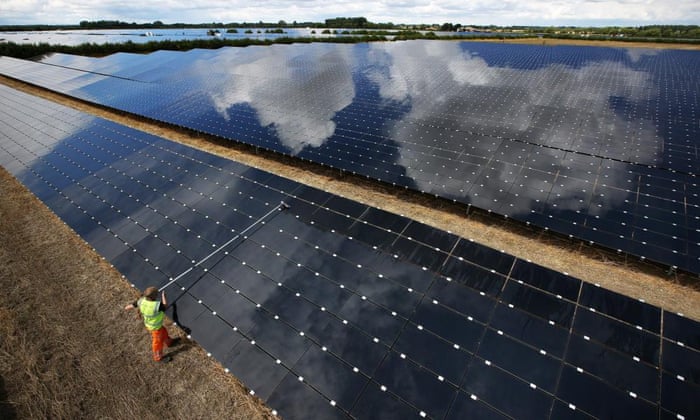by Michael Smith (Veshengro)

Had it been in Texas I might have understood it better considering that one of the Lone Star State's lawmakers things along the same light as regards to solar and when it comes to wind turbines then, according to him, we have to be really careful as those stop the wind from blowing in the end – as wind is a limited resource – and eventually will stop the Earth from spinning.
But back to Woodland, NC.
Woodland is a sleepy little town nestled in the open spaces of North Carolina. It has 388 inhabitants and between the white farmhouses the Highway 258 snakes along. Along this highway, at the verges, the 21st century was meant to arrive in the form of a solar array. For the inhabitants of the little town a nightmare.
The company – Strata Solar Company – applied to be permitted to install a solar farm along Highway 258 but after protest were raised by the community against those plans the council of Woodland refused to grant permission.
In a town hall meeting residents could voice their objections before council made its decision and enables us a view into this strange way of thinking by many and not just in that community in the USA.
Solar farms as plant killers
A spokesperson for the citizenship called Bobby Mann stated the fear that solar panels would suck up all the energy of the sun. His wife Jane told the audience that she had seen areas where around solar arrays all plants had died because they no longer could get enough sunlight. A former teacher who used to teach science expounded her theory that plants could not longer photosynthesize because there would not be enough sun.
Furthermore, she said, the clusters of cancers in the area could be not coincidence. No one could tell that solar panels were not causing cancer. They did, she stated.
Others claimed that properties near solar arrays would become worthless and would turn the place into a ghost town as everyone would be moving away.
Strata Solar Company tried to counter those arguments and stated – rightly so – that solar panels are only using the light that reaches them and that, on no account, are they cancer causing. But to no avail. The council voted three to one against granting permission for this small solar farm.
Unfortunately the attitude of many lawmakers in the US government is about the same. They too believe that solar panel make the sun go dark and that wind turbines suck all the wind and might even stop the Earth from spinning. No, I am not joking.
© 2018


 The first part of the program aims to provide
The first part of the program aims to provide  Australian solar power scientists have developed a cheap and fast way to print solar cells onto plastic — plastic that can be used to cover an iPad or tint the windows covering a skyscraper.
Australian solar power scientists have developed a cheap and fast way to print solar cells onto plastic — plastic that can be used to cover an iPad or tint the windows covering a skyscraper. A couple of key players in the UK's waste and renewable energy sectors have agreed a deal to transform large landfill sites into solar power farms, generating energy for the National Grid.
A couple of key players in the UK's waste and renewable energy sectors have agreed a deal to transform large landfill sites into solar power farms, generating energy for the National Grid.
























